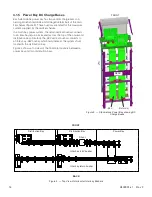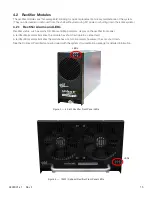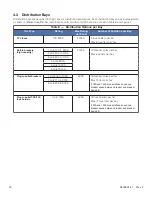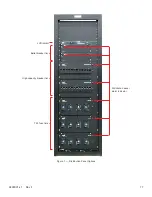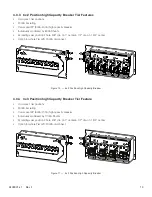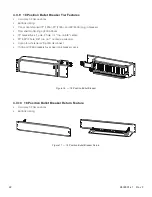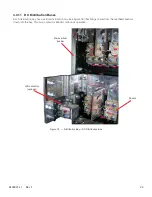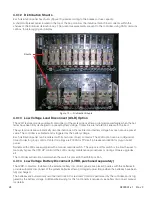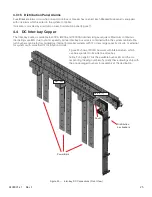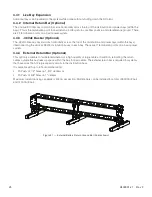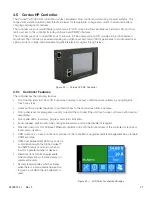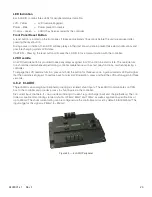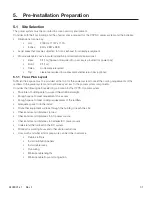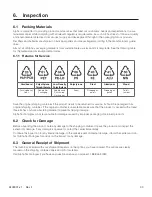
9400001-J1 Rev F
28
4.6 External Peripherals
The external peripherals described here are only for use with the controller.
4.6.1 L-ADIO
The L-ADIO is the standard analog and digital I/O peripheral for low voltage (<60Vdc) systems. The L-ADIO commu-
nicates on CAN bus to the controller and provides user access to I/O management via the controller.
Figure 24 — L-ADIO I/O Peripheral
Power Input
LVD Override
3 LED Status
Indicators
Reset
CAN Ports
Analog Inputs
Four voltage inputs, V1 – V4, are provided for a variety of voltage monitoring requirements. The input channels can
measure a signal between -60Vdc to +60Vdc.
Four current input channels, I1 – I4, provide monitoring of current; e.g., discharge (load) and charge (battery). The
controller is capable of monitoring standard shunts of 25, 50 and 100mV as well as application specifications of up
to 250mV. The shunt current rating can be configured via the controller and is set by default to 800A/25mV. The
input range for this signal is -250mV to +250mV.
Four temperature input channels, T1 – T4, provide monitoring of temperature probes (thermistors). These are typi-
cally used for either ambient temperature, or for battery post monitoring to enable battery temperature compensa-
tion. The temperature sensor is provided by Alpha in various lengths. The input range for this signal is 0V to 5V and
is powered internally from the L-ADIO.
Digital Inputs
The L-ADIO accommodates up to eight digital input channels, D1 – D8. Each channel responds to a zero or system
voltage potential at the input to activate or deactivate the appropriate condition.
These channels can monitor digital alarm/control signals from rectifiers, converters and many other types of equip-
ment.
An additional digital input, “EXT” is reserved for monitoring an external LVD override.
Alarm and Control Output Relays
Each L-ADIO contains 12 Form C alarm output relays to extend alarms and to control external apparatus. Each inter-
nally generated alarm or control signal may be mapped to any one of the 12 relays, several signals may be mapped
to just one relay or none at all.

